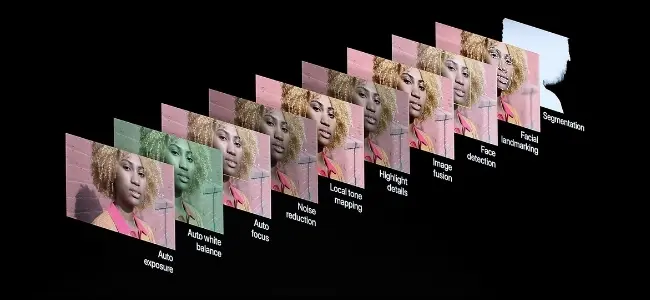And Enhance!! (from Blade Runner ), that’s Computational Photography .
Computational photography describes signal processing techniques and algorithms that allow computers to replicate photographic processes like motion - blur correction , auto-focus ,depth-sensing , zoom and other features that would otherwise be impossible without optics ,while some of these processes use artificial intelligence techniques, Computational Photography is more than just AI , it involves a series of process like that takes an image from the Ones and Zeros on captured by image signal sensors and process to the final image displayed on screens . This article is going to be majorly focused on some computational photographical techniques employing AI. Smartphone Cameras have compensated for their hardware limitations due to the limited space to fit actual optics (like movable lenses to alter focus or depth of view ), and the limitations that comes with the technology behind digital cameras (CMOS sensors) , with the enormous computational power of their processors and have had to use clever algorithms to provide features like Zoom, Object-sensitive focus among others. These algorithms have incorporated some AI techniques in recent times to provide some unimaginable features like taking Google pixel’s night mode that allows you to take high definition pictures in extremely low-light .
In smartphones , cameras don’t just capture photons , they compute images. ‘The camera never lies has always been a lie , at least in digital cameras. ' The human brain is not so different , at the center of the human eye lies a blind spot and the only reason we do not see a black spot when we look at things is because our brains use the information from the signals surrounding that part of the image to guess what we should be in that part of the image .
At the heart of the smartphone revolution has been the ability to take high resolution photos of our favorite moments coupled with an almost unceasing improvement in the memory capacities of these devices .The ability to not just take good pictures but to take as many as we want and to have them stored securely is something the smartphone industry hasn’t taken for granted. In 2015, Apple had 800 employees working on the Iphone’s camera alone . In 2020 , Xiaomi announced that it would be employing over 2000 engineers to work on just their cameras . The biggest advances in smartphone cameras in recent times haven’t come from the lenses ,or camera hardware but from improved AI software . In 2017 , the Apple iphone X debuted apple’s new ‘Portrait-Mode’ feature . This feature allowed users to focus on their object of choice and blurs out the rest of the image like an actual DLSR camera with movable lenses and adjustable focus . This means that the phones have to recognize the object in the image and blur out the rest of the image.
The obvious candidate to start with is the use of AI to brighten up images
